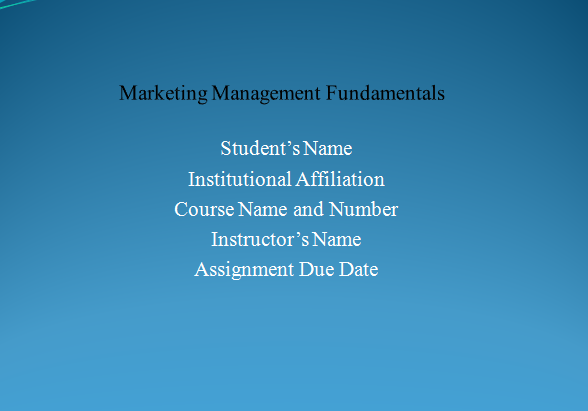Briefly describe the country’s history and its relevance to its current cultural state today.
Marketing Management Fundamentals
Your company’s board of directors is interested in the international marketing plan proposal and has asked you to do a cultural audit. Your audit will explore two main areas: (1) cultural factors related to doing business in this particular country, and (2) a competitive analysis.
Develop a PowerPoint presentation organized as follows:
Cultural Factors
Slide 1: Briefly describe the country’s history and its relevance to its current cultural state today.
Slide 2: Identify customer demographic trends that are related to business activities in this particular country.
Slide 3/4: Briefly discuss customers and traditions of the country’s citizens and how these can possibly influence business there.
Slide 4/5: Identify and discuss language issues and any other cultural implications of introducing your product in this country.
Slide 6: Provide an assessment of the geographic region and why this is a good fit for your company’s product.
Competitive Analysis
Slide 7/8: Analyze the industry in this particular country. Perform a SWOT analysis. For more on how to conduct a SWOT analysis, see http://articles.mplans.com/how-to-perform-a-swot-analysis/.
Slide 8/9: Based on what you learned in the competitive research, apply the four Ps of marketing to your specific product by outlining the following:
Product (the features and benefits of the product)
Place (one possible outlet to sell the product in this particular country)
Price (one price strategy to consider in this particular market based on your competitive analysis)
Promotion (one promotional strategy to consider in appealing to your new global customers)
Slide 9/10: Conclusion: Based on everything you researched, present a brief analysis of any similarities between the domestic and international markets, any particular challenges and how you will manage those challenges in your selected country.
Answer preview briefly describe the country’s history and its relevance to its current cultural state today.
APA
10 slides

